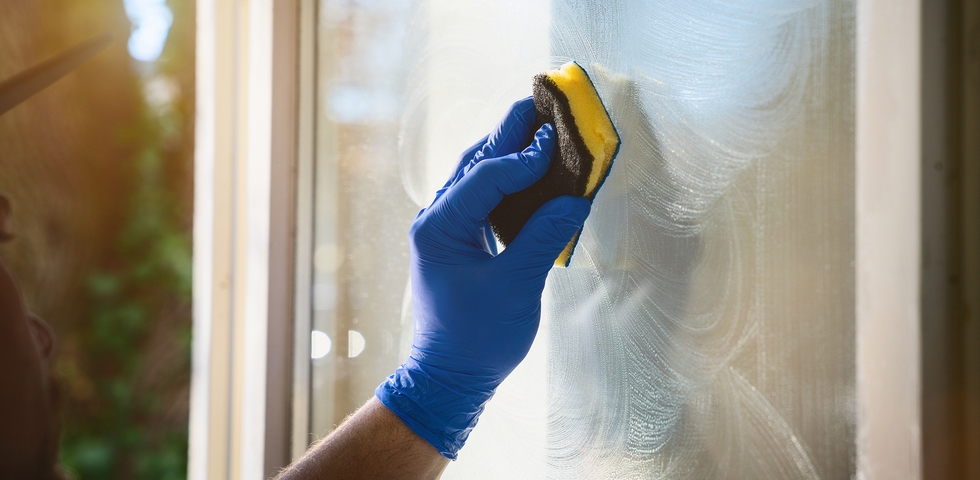Washing your windows involves having the right tools and supplies. The rest is simply application. The best way to wash windows is by getting a quality squeegee and a sharp rubber blade. If the rubber blade becomes dull and can no longer seal properly, replace it as soon as possible to avoid streaks.
If you are not confident about washing the windows on your own, there are professional window cleaners who can get the job done. Nonetheless, it would be helpful to know a few window cleaning tips and tricks, just so you understand what a thoroughly washed window looks like.
Here are the six best ways to wash windows:
1. Assemble the right tools & supplies.
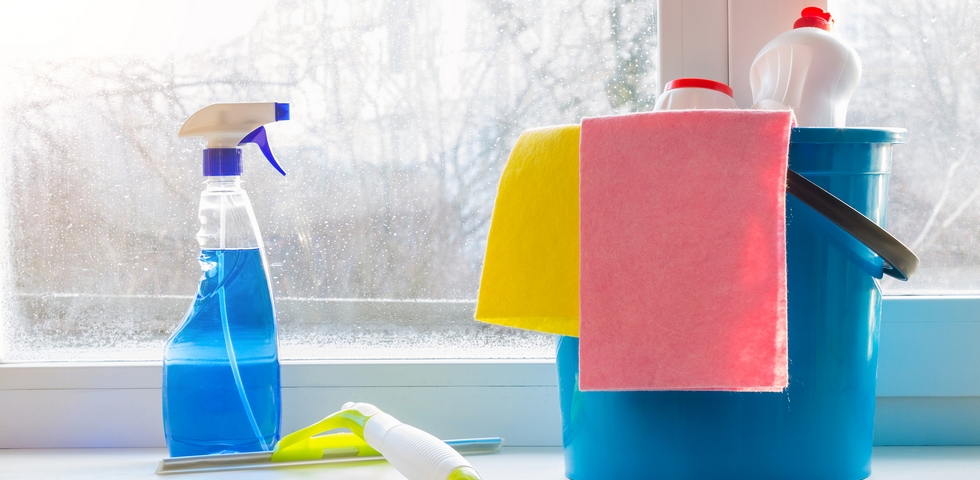
To thoroughly clean your windows, you need to assemble the right window cleaning supplies and tools. These include a rubber squeegee to dry the windows, a sponge or brush for the actual cleaning, and a rag or clean cloth. Ideally, you should also have an absorbent microfiber or any lint-free cloth, a bucketful of your favourite cleaning solution, and a large towel to protect the floors.
2. Get your cleaning solution ready.
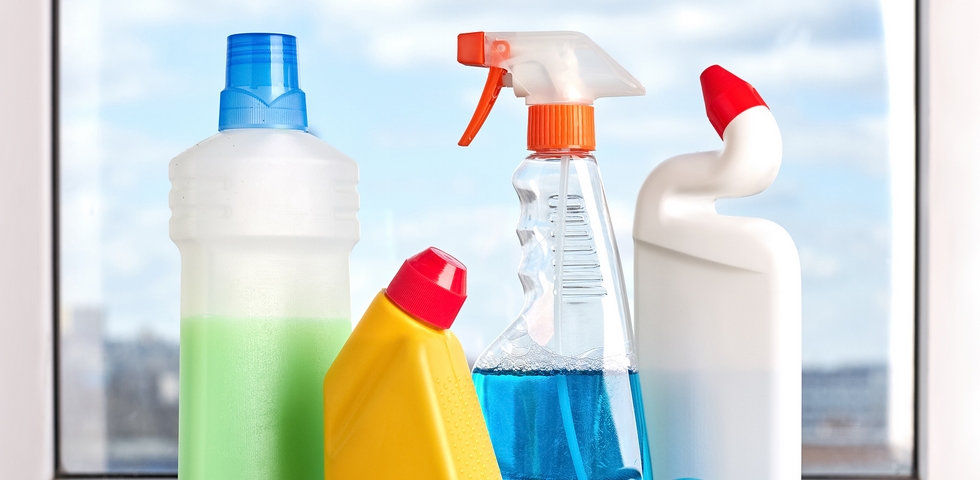
While there are many cleaning solutions in the market, cleaning experts recommend a simple water and dish soap solution. This is better than using a paper towel, spray bottle, or newspaper to clean your windows. They will just shift the dirt and the cleaning mixture around. The result is a murky, streaky window that looks worse than it was before the cleaning.
For the best cleaning solution, mix 7.6 litres of water with 6 ml of your favourite dishwashing liquid soap. To this mixture, add 60 ml each of alcohol, vinegar, and isopropyl. Also add 15 g of cornstarch, which prevents streaks, and two cups (or 480 ml) of water. Once this is done, your window cleaning solution is ready to use.
3. Pre-clean your windows.
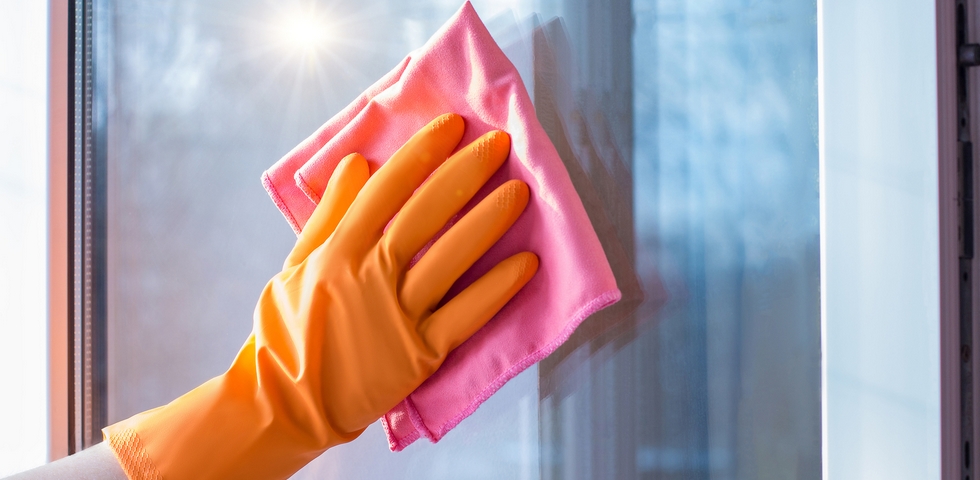
Before you start the actual cleaning job, get rid of all stubborn stains first. The outside surface of your windows is especially susceptible to stubborn stains. This is because they are exposed to bird droppings, hard water runoff, minerals and other elements that can cake grime and dirt.
To remove the stubborn stains, you could start by spraying the stains with pure vinegar and leave it for around five minutes. Using a cloth or sponge, rub the stain away and proceed with your cleaning. You can also use oxalic acid to make a paste by mixing water and your favourite cleaner. In some cases, a razor could be all you need to scrape the gritty or crusty stains off your window. Just remember to do it gently.
Besides stubborn stains, you should also remove any decals and stickers from your window surfaces before starting.
4. Clean the windows from the outside.
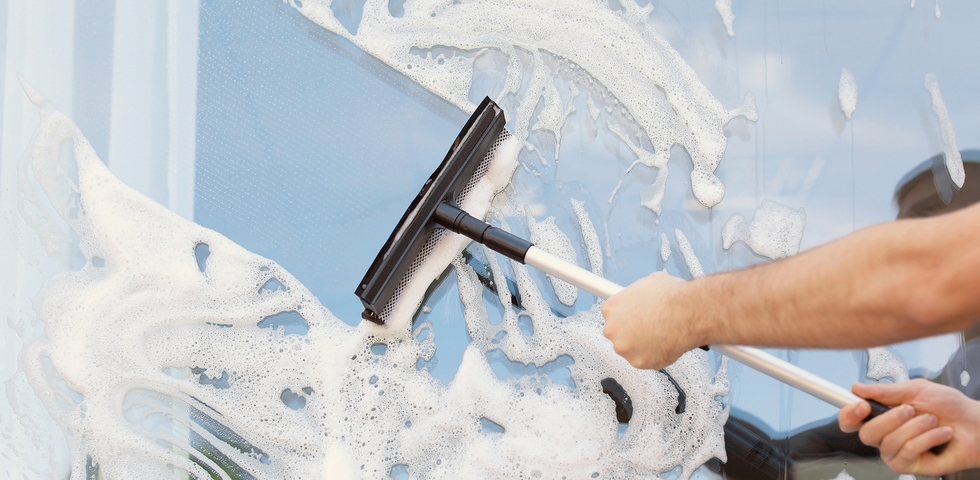
If your windows have many small panes, start off with a sponge. If you have larger picture windows, you should use a squeegee instead.
First, dip your sponge or squeegee into your prepared cleaning solution. Next, squeeze or wring out the excess water before wiping down the window. Make sure you reach into all corners for a thorough cleaning job. If you don’t have a ladder and your outside windows are mounted too high up, get an extension pole and attach a brush or a squeegee to it.
There are also special window cleaners you can use to spray the windows all the way to the second floor. Once your window is clean, dry it before proceeding to the next. If your squeegee makes a squeaking sound while you are washing your windows, add some more soap to your solution so it can glide along smoothly.
5. Dry the windows.
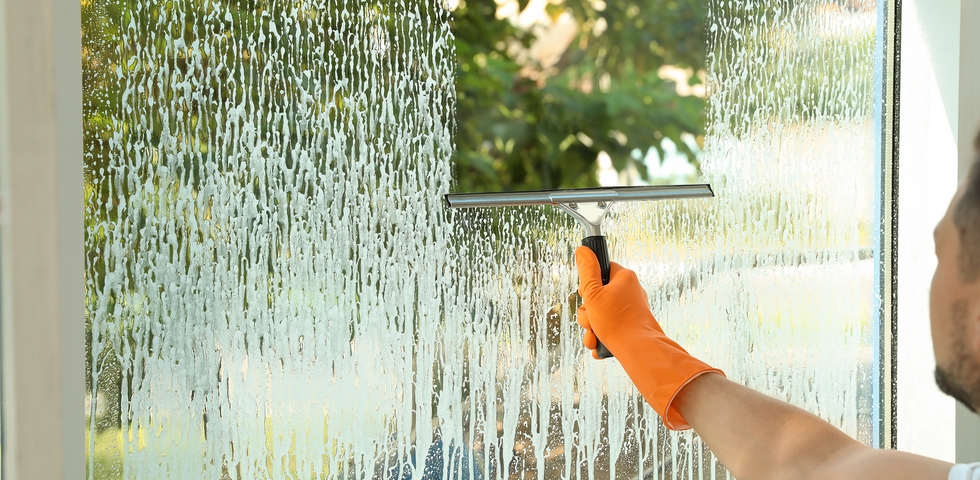
Once your windows are clean, the next step is to wipe them dry. You can use the rubber blade on the squeegee to vertically wipe off water on small-paned windows. Do this from the top going down to the bottom.
If it’s a picture window, horizontal strokes are recommended. While overlapping every stroke by a couple of inches, wipe from the top and work your way down the window. Between each stroke, remember to clean the blade dry using a lint-free cloth. Make sure the rubber blade is consistently in touch with the window.
6. Dust or vacuum inside the windows.
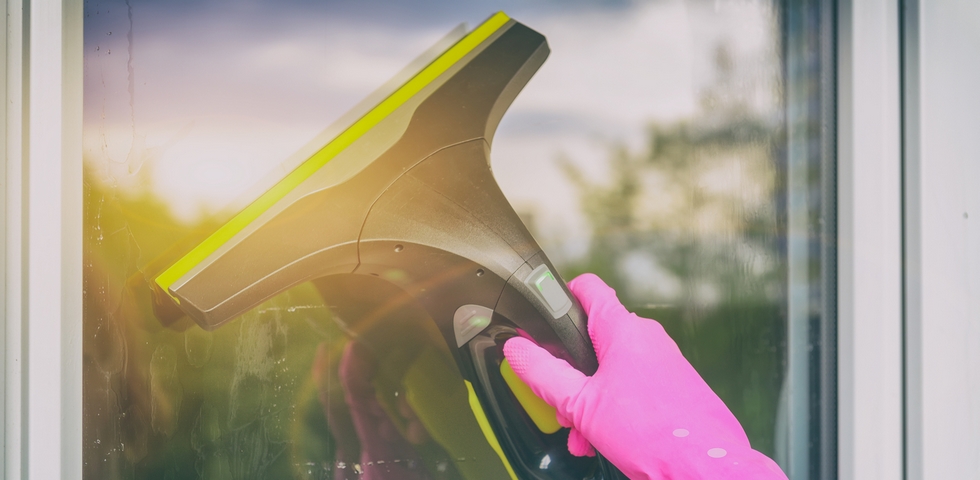
When dusting and vacuuming, make sure you get to all the corners, frames, and windows. This way, you avoid spreading dirt during the cleaning exercise. Before you embark on cleaning your inside windows, spread a large towel on the floor in front of the window to catch potential spills.
Proceed to clean the windows and keep on wiping off the excess water. Wherever water drips, spills, or runs down a window, wipe it dry with an absorbent, lint-free cloth to prevent streaks.

